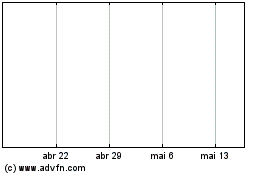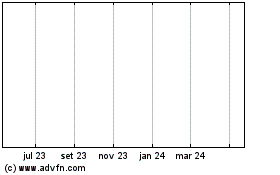By Paulo Trevisani
A couple of new exchange traded funds are offering to individual
investors a chance to capture the so-called night effect, a
strategy that academic research indicates could be a winner in the
long run, but that remains largely untested.
AlphaTrAI Funds Inc.'s NightShares 500 ETF, ticker NSPY, and the
NightShares 2000 ETF, NIWM were launched June 28 to capture the
off-hours trade. Both funds buy their positions right before 4pm
Eastern Time and sell them right after 9am the next trading
session, sitting on cash during the daylight session.
As regular ETFs, though, investors can trade them when stock
markets are open.
"We are buy-and-hold, but just overnight," said NightShares
Chief Executive Officer Bruce Lavine. "We are using the most liquid
parts of the market, which is the open and the close, to put on and
take off our position."
The ETFs are based on academic research indicating that returns
are fatter between trading sessions.
In a 2008 paper, authors Michael Cliff, from Virginia Tech,
Michael J. Cooper, from The University of Utah and Purdue
University's Huseyin Gulen found that U.S. equity premium between
1993 and 2006 was "solely due to overnight returns."
"This day and night effect is robust to the day of the week,"
they wrote, calling it "a puzzling finding."
In a 2020 study updated last April, New York Fed researchers
Nina Boyarchenko, Lars C. Larsen and Paul Whelan said that the
largest positive returns in a 24-hour cycle happen between 2 a.m.
and 3 a.m. Eastern Time, as European markets open, averaging 3.6%.
They attribute the "overnight drift returns" to risk-averse market
makers adjusting their holdings after the U.S. market close.
They say the nightly returns "are positive in 20 out of 23 years
since 1998 and statistically significant in 17 of these." More
specifically, the 2a.m.-3a.m. return "is statistically significant
on every day of the week, and in 9 out of 12 months of the year,"
unlike returns during other periods of the day.
But the NightShares ETFs are the first ones to test the
strategy, according to investment research firm CFRA.
"It's an interesting idea, there are no other products of this
type," said Aniket Ullal, an ETF analyst at CFRA.
Mr. Ullal also said it remains an unproven thesis.
"In terms of whether it's a good strategy and if it does work
versus regular trading hours, I'm not sure. The performance has not
been good, that's clear."
As of July 25, nearly a month since the funds' inception, NSPY
had lost 2.7%, while the S&P 500 had gained 3.5% in the same
period. NIWM had also fallen while the Russell 2000 had risen, both
by about 4%.
The ETFs are relatively small. NSPY has $8 million in assets
under management and a 0.55% expense ratio. The net asset value was
$30.76 on July 20. NIWM has $4 million in AUM and NAV of $29.42,
with a 0.55% expense ratio.
NightShare's Mr. Lavine believes the strategy will outperform
the broader market in the long run.
"One of the reasons we think the night effect exists is that
institutions de-risk at the end of the day and kind of re-risk in
the morning. So we're kind of bringing to the little guy the
opposite of that trade."
The ETFs are offered to long-term investors as well as those who
have a thesis about how markets will react to early-morning
relevant data, such as consumer price index or jobs reports.
"If you have a view that, for instance, the initial reaction to
data is going to be very positive but then everyone's gonna freak
out, so you're going to see this pop and then you're going to see
this drop after the bell," said Max Gokhman, AlphaTrAI's chief
investment officer, "you can buy our product and forget about it,
and you will be out before" the daytime trade goes south.
AlphaTrAI data shows that in the particularly gruesome period
between January 2 and June 30 this year, the small-cap iShares
Russell 2000 ETF, IWM, lost 17.94% in regular hours and only 6.79%
overnight. Considering the most common strategy of holding the
stocks day and night, the total loss in the period was 23.51%.
In the large cap SPDR S&P 500 ETF, or SPY, the difference
was much narrower, with a total negative return of 19.98% broken
down to a 11.06% decline during the day and 10.04% when markets
were closed.
Volatility was much lower in both cases between daily sessions,
according to AlphaTrAI.
(END) Dow Jones Newswires
July 25, 2022 15:18 ET (19:18 GMT)
Copyright (c) 2022 Dow Jones & Company, Inc.
Unified Series T (NYSE:NSPY)
Gráfico Histórico do Ativo
De Mar 2024 até Abr 2024

Unified Series T (NYSE:NSPY)
Gráfico Histórico do Ativo
De Abr 2023 até Abr 2024
